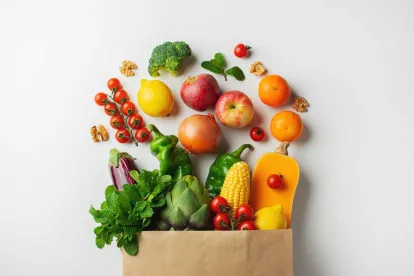-
We have reported on developments regarding toxic elements of concern that may be present in the food supply and, in particular, FDA’s “Closer to Zero” plan to reduce the levels of arsenic, lead, cadmium, and mercury in food for babies and young children. These toxic elements cannot be completely avoided in the fruits, vegetables, or grains that are used in baby foods, juices, and infant cereals because they are present in the environment and may enter the food supply through soil, water, or air.
-
On July 15, 2022, FDA released the Fiscal Years 2018 – 2020 Total Diet Study (TDS) Elements Report on the analytical results for nutrients and toxic elements from 307 foods (including beverages and water), as well as 384 baby food (BF) products, that FDA sampled and analyzed over the 3-year period of the latest TDS and a Supplement (table) that summarizes the data. Highlights from FDA’s report include:
-
Total arsenic, lead, and mercury were detected in less than half of the FY2018-FY2020 vegetable samples (35%, 10%, and 6% detects respectively); whereas cadmium was detected in 93% of vegetable samples (mean concentrations in vegetables range from: total arsenic, not detect (ND) – 15 ppb; cadmium, ND–222 ppb; lead, ND–12 ppb; mercury, ND – 1.8 ppb)
-
Among the foods with the highest mean concentrations of each analyte:
-
Arsenic (total) was ND in most of the foods tested (i.e., 57%), but was detected in all 27 samples of Baked cod, all 3 samples of Canned Tuna, all 3 samples of Fish sticks, all 27 samples of Baked salmon, and all 27 samples of Pre-cooked shrimp, with the highest reported level of 10,900 parts per billion (ppb) found in Baked cod;
-
Other than seafoods, Crisped rice cereal, BF Rice cereal, and Brown and White rice also had high mean total arsenic concentrations;
-
The results of the subset of samples that were further analyzed for inorganic arsenic ranged from 6.1 to 103 ppb and the highest mean concentration (i.e., 93 ppb) was found at in Crisped rice cereal;
-
-
Cadmium was ND in only 39% of the foods tested, and was detected in all 3 samples of Sunflower seeds, all 27 samples of Raw spinach, all 3 samples of Potato chips, all 27 samples of Leaf lettuce, and all 27 samples of French fries, with the highest reported level of 400 ppb found in both Raw Spinach and Sunflower seeds;
-
Lead was ND in most foods (86%) but was detected in all 8 samples of BF Sweet potatoes, all 8 samples of BF Teething biscuits, all 3 samples of Sandwich cookies, all 3 samples of White wine, and all 3 samples of Ranch salad dressing (low-calorie), with the highest reported level of 38 ppb found in BF Sweet potatoes; and
-
Mercury was ND in most foods (93%) but was detected in all 3 samples of Canned tuna, all 27 samples of Baked cod, all 27 samples of Baked salmon, all 27 samples of Pan-cooked catfish, and 27 samples of Pre-cooked shrimp, with the highest reported level of 250 ppb found in Canned tuna.
-
-
For TDS foods with FDA Action Levels, i.e., Apple juice (10 ppb lead, 10 ppb inorganic arsenic), Chocolate and Hard candy (100 ppb lead), and Infant rice cereal (100 ppb inorganic arsenic), or Standards, i.e., Bottled water standards (5 ppb lead, 10 ppb arsenic, 5 ppb cadmium, 2 ppb mercury), all results were below the levels/standards established by FDA.
-
-
While these new results add significantly to the analytical database for toxic elements of concern, especially for cadmium, which had been the most lacking, FDA has not posted any revisions to its Closer to Zero plan or otherwise provided any updates on establishing interim reference levels (IRLs) since the update in June that is discussed here.
Nicholas S. Prust and Frederick Stearns also contributed to this article.





 />i
/>i
